The following is a lecture by Bertrand Comparet identifying Anglo-Saxon Israel as Daniel’s Fifth Kingdom in prophecy:
Audio here:
Transcript:
And I want to talk to you about Daniel’s Fifth Kingdom. It is universally recognized that many of the Bible’s greatest prophesies are found in the Book of Daniel. Many of these are phrased in such obscure language that they were hard to understand until their fulfillment made clear their meaning, and that is exactly what God intended for he had the angel tell Daniel,
But thou, O Daniel, shut up the words, and seal the book, even to the time of the end….for the words are closed up and sealed till the time of the end. Many shall be purified, and made white, and tried; but the wicked shall do wickedly: and none of the wicked shall understand; but the wise shall understand. (Daniel 12:4, 9-10)
However, actual events which have followed through the centuries have fulfilled these prophesies so unmistakably that their meaning is now clear.
One of these prophesies is accepted by all churches that I know of, and they have agreed upon its meaning — that is, for the first four-fifths of it. Yet, this prophesy so clearly sets forth the Anglo-Israel doctrines that it is hard to see how the preachers of these churches can be blind to it. And now this is an especial challenge to all preachers who deny the truth of the Anglo-Israel doctrines. Follow this with me in your Bibles, and then let me hear you deny it.
I refer to Nebuchadnezzar’s image which Daniel explained as a prophecy sent by God — this is all in second chapter of Daniel. You will remember that in Babylon, King Nebuchadnezzar had a dream of such obvious importance that it greatly troubled him. But on awakening, he forgot his dream so he could not tell it to his wise men to ask their interpretation. Being a typical oriental monarch, he found a quick solution to this puzzle. And we read:
And in the second year of the reign of Nebuchadnezzar, Nebuchadnezzar dreamed dreams, wherewith his spirit was troubled and his sleep broke from him. Then the king commanded to call the magicians, and the astrologers, and the sorcerers and the Chaldeans for to show unto the king his dreams. So they came and stood before the king. And the king said unto them, I have dreamed a dream and my spirit was troubled to know the dream. Then spoke the Chaldeans to the king in Syriack, O king, live fore ever; tell thy servants the dream, and we will shew the interpretation. And the king answered and said to the Chaldeans, ‘The thing is gone from me. If ye will not make known unto me the dream, with the interpretation thereof, ye shall be cut in pieces and your houses shall be made a dunghill. (Daniel 2:1-5)
This was surely a startling unreasonable demand to make. These were sorcerers, old hands at the game of thinking up impressive but vague answers — vague and equivocal enough to let them fit their words into what ever might happened, an art they shared with some of the famous Greek oracles. But to be required to give an answer when you didn’t yet know what the question was, that was too much to expect. They replied,
There is not a man upon the earth that can know the king’s matter. Therefore there is no king, nor ruler, that has asked such things of any magician, astrologer or Chaldean. And It is a rare thing that the king requires and there is none other that can show it before the king except the gods whose dwelling is not with flesh. (Daniel 1: 10-11)
But this did not pacify the king who commanded that all the magicians, astrologers and Chaldeans be killed because their inability to explain his dream exposed them as frauds. Only Daniel and his Hebrew companions escaped this purge because God gave to Daniel the power both to recount the dream itself and also to explain it. In Daniel’s own words, this was the dream:
Thou O king sawest and beheld a great image. This great image, whose brightness was excellent, stood before thee and the form thereof was terrible. This image’s head was of fine gold, his breast and arms of silver, his belly and his thighs of brass, his legs of iron, his feet part of iron and part of clay. (Daniel 2: 31-33)
Then Daniel went on to explain to King Nebuchadnezzar the meaning of this image:
Thou O king art a king of kings for the God of heaven has given thee a kingdom, power, strength and glory. And wheresoever the children of men dwell, the beasts of the field and the fowls of heaven has he given unto thine hand and has made thee ruler over them all. Thou are this head of gold, and after thee shall rise another kingdom inferior to thee and another kingdom of brass, which shall bear rule over all the earth. And the fourth kingdom shall be strong as iron forasmuch as iron breaks in pieces and subdues all things and as iron that breaks from all these shall it break in pieces and bruise. And whereas thou sawest the feet and toes part of potter’s clay and part of iron, the kingdom shall be divided: but there shall be on it the strength of iron, forasmuch as thou sawest the iron mixed with miry clay. And as the toes of the feet were part of iron and part of clay, so the kingdom shall be partly strong and partly broken. Whereas thou sawest iron mingled with miry clay, they shall mingle themselves with the seed of men, but they shall not cleave one to another, even as iron is not mixed with clay. ( Daniel 2:37-43).
As I said, the churches are all in agreement that this image represents the Babylonian succession of empires. The head was Babylon itself under Nebuchadnezzar, who brought it to its pinnacle of power and wealth. In its day, it was the most important empire in the then-known world — that is, western Asia and the lands fronting the Mediterranean Sea. It ruled the entire Fertile Crescent, from the Persian Gulf even to Egypt.
The next succeeding empire of comparable power was that of the Medes and Persians, who conquered Babylon about 536 B.C. The kingdom of Media was absorbed in the rising power of Persia even before the conquest of Babylon. This Persian Empire extended from northwest India and Afghanistan across the Fertile Crescent over most of Asia Minor — which constitutes modern Turkey — down through Syria and Palestine, and even including Egypt.
This was the empire represented by the breast and arms of silver in Nebuchadnezzar’s dream image. It was conquered and absorbed into the empire of Alexander the Great of Macedon between the years 334 and 331 B.C. Alexander became king of Macedonia in 336 B.C. By 332, he had conquered Asia Minor — that is modern Turkey — and Syria, Palestine and Egypt. He conquered the Tigris and Euphrates valleys in 331, swept over Persia, Bactria — which is largely the same as modern Afghanistan — and down into northern India. In ten years, he had built up an empire covering all the then known civilized world from Greece eastward to northern India. In 323 B.C., he died in a drunken debauchery in Babylon. His huge but short-lived empire was the belly and the thighs of brass in Nebuchadnezzar’s dream image.
Fourth and last came the great empire of Rome, represented by the legs of iron. The city of Rome was founded in 753 B.C. and the Roman Republic — which began its greatness — was established about 500 B.C. Its empire began with the conquest of Macedonia and Egypt in 168 B.C. Eventually, the Roman Empire expanded so that it ruled Italy, Spain, Gaul — which is modern France — Macedonia, Greece, North Africa, and Egypt, western Asia Minor, Syria and Palestine. Its frontiers were the Atlantic Ocean, the Irish Sea, the south border of Scotland, the North Sea, the River Rhine, the Danube River, the Black Sea, the Caucasus mountains, Armenia, to the middle of ancient Babylonia, the Arabian desert, the Red Sea, Nubia, and the Sahara desert, and the Moroccan mountains.
Its outstanding characteristic was its harsh and cruel treatment of its subject people. As Daniel said,
And the fourth kingdom shall be strong as iron: forasmuch as iron breaks in pieces and subdues all things: and as iron that breaks all these, shall it break in pieces and bruise. (Daniel 2:40)
Remember there were two legs of iron, so the Roman empire split into the western — or Roman Empire — and the eastern empire — often called Byzantine. Likewise each of these two was an enforced mixture of different peoples, having nothing in common except that they were ruled by the Roman army, and when the military force failed, they broke up into their original fragments.
As Daniel said,
As the toes of the feet were part of iron and part of clay, so the kingdom shall be partly strong and partly broken. And whereas those sawest iron mixed with miry clay they shall mingle themselves with the seed of men but they shall not cleave one to another, even as iron is not mixed with clay.
Up to this point, all the churches are with me one hundred percent. Their preachers all agree that these are the empires which Daniel’s prophesy foretold because they actually do fulfill that prophesy so perfectly.
Now we come to the place where most of the churches don’t want to recognize Daniel as a prophet. Let’s continue with what Daniel said. After concluding his description of the image and its interpretation as these four successive empires, then in the very next verse, Daniel 2, verse 44 he says,
And in the days of these kings shall the God of heaven set up a kingdom which shall never be destroyed: and the kingdom shall not be left to other people, but it shall break in pieces and consume all these kingdoms and it shall stand forever.
Now let’s analyze this — first of all, let us note that this Fifth Kingdom spoken of by Daniel is not like the first four. The first four were the creations of pagan men but, this Fifth Kingdom shall be set up by God himself. When shall it come into existence? Daniel says “in the days of these kings” — this is some time during the existence of the four empires of the Babylonian order.
So let us refresh memory as to their dates. The Babylon Empire came to an end in 536 B.C., when it was conquered by the Medo-Persian Empire. The Medo-Persian Empire came to an end when it was overrun and conquered by the armies of Alexander the Great in 331 B.C. After his death, Alexander’s empire just fell apart into four parts as another prophesy of Daniel’s had foretold. Alexander died in 323 B.C. These are the first three empires symbolized by Nebuchadnezzar’s dream image, so this leaves only the fourth and last one — imperial Rome.
The city of Rome was founded in 753 B.C. — the Republic was established about 55 B.C. Expansion into an empire began with the conquest of Macedonia and Egypt in 168 B.C. We need not cover in detail the history of the Roman empire — enough to note that just as the dream image had two legs, so the Roman empire was divided into eastern and western parts.
This was first done by emperor Diocletian in 283 A. D. — and the division became permanent at the death of emperor Theodosius in 395 A. D. The two separate empires — that is, the western generally governed from Rome and always called Roman — and the eastern empire governed from Constantinople — the original name of which city had been Byzantium and generally called the Byzantine Empire — these two continued for some time after their separation.
The western — or Roman empire — fought a losing battle against the ever-increasing pressure of the invading peoples who were the Israelites, moving from Scythia into their new European homes. The Visigoths were an Israelite people and were largely Christian by 350 A.D. They were driven west by the pressure of the invading Huns. They entered the Roman empire in 376 A.D., scoring a decisive victory over Roman armies in 378, so Rome ceded them certain Roman territories. They invaded Italy itself in 400 A.D. — forced Rome to pay a ransom in 408 A.D. That year Rome withdrew its armies from Britain to aid in the defense of Rome — but to no avail for in 410 A.D., the Visigoths captured and looted the city of Rome itself.
In 412 A.D., they moved on into southern France and northern Spain, where they ruled Spain until the Moorish conquest in the year 711. In 476 A.D., Odoacer, the general of the German mercenary soldiers in the Roman army rebelled, captured the capital city of the western Roman empire and deposed the last emperor, Romulus Augustulus. And this date — 476 A.D. — is accepted by historians as marking the end of the western half of the Roman Empire.
Meanwhile, the eastern empire — generally called the Byzantine Empire with Byzantium or later called Constantinople as its capital — claimed to be ruling even the western Roman empire, although this was more claim than fact except for brief periods. From 395 A.D., the western Roman empire was really separate. But enemy pressures were building up against the eastern empire — pressures too strong to be resisted.
By about 650 A. D., the Moslems had conquered Arabia, Syria, Palestine, Egypt, North Africa and Sicily. The Byzantine Empire was by that time reduced to Asia Minor and the Balkans. Then in 1074, the Turks captured most of Asia Minor. After that came enemies from an unexpected source — the combined forces of Venice and the fourth crusade captured Constantinople in 1204, taking also all the Balkan territories — and they set up the short-lived Latin Empire of Constantinople.
While the authority of the Byzantine Empire was restored in the city of Constantinople in the 1260’s A.D., all the Balkan territories were lost — they broke up into many small independent nations. Remember that Daniel said the toes were part iron and part clay and would not stick together? For two centuries more, just a shadow of the Byzantine Empire continued, consisting of just the city of Constantinople and its environs until the Turks captured the city in A.D. 1453, ending the last pretense of the existence of this leg of the Roman empire.
So the year 1453 marks the end of the four world empires of Nebuchadnezzar’s dream image. Remember now the words which many preachers won’t face because it ruins their doctrines — in Daniel 2, verse 44, Daniel said,
In the days of these kings shall the God of heaven set up a kingdom which shall never be destroyed. And the kingdom will not be left to other people, but it shall break in pieces and consume all these kingdoms and it shall stand forever.
So we must find God’s own kingdom in this world — not in some remote future to which the preachers would like to banish it — but now. It must have had its beginning in the days of these kings, and therefore we must study this period which we have seen extends from Daniel’s own time — about 600 B.C. — to not later than 1453 A.D. — for that is the period in which the kings of the Babylonian succession of empires ruled, as we have just seen.
Why do the preachers like to ignore this verse of Daniel’s prophesy? Because there is a great kingdom which was set up within that period — and which still exists — just as God promised through Daniel it would. But it is a nation of Anglo-Saxon Israel, and if they recognize this as a kingdom which the God of heaven set up, then they can no longer deny the truth of the Anglo-Israel doctrines. So, they would rather try to make a liar out of Daniel and his God than to admit that their own doctrines are in error — and that God has kept his promises to his people — Israel.
If it shocks you to think that the nations of Anglo-Saxon, Germanic and Scandinavian Israel today are the the kingdom of God, then be prepared to be shocked — for that is just what I am about to prove.
The kingdom of God is the only everlasting kingdom. Psalm 22, verses 27 and 28 says
All the ends of the world shall remember and turn unto the Lord, and all the kingdoms of the nations shall worship before Thee. For the kingdom is the Lord’s, and He is the governor among the nations.
Psalm 145, verses 13 and 14 says,
Thy kingdom is an everlasting kingdom and Thy dominion endureth throughout all generations.
Daniel 4, verse 3, adds,
How great are His signs and how mighty are His wonders! His kingdom is an everlasting kingdom, and His dominion is from generation to generation.
But this kingdom of God is not just an abstract idea — lost somewhere among the clouds — it is a very real kingdom upon this earth. It has not been governed as well while mere men rule it as it will be when Jesus Christ returns to be its king. Nevertheless, it is still the kingdom of God here on earth. Remember how Jesus Christ himself in Matthew 21, verse 43, told the Jewish usurpers who ruled in Judea,
Therefore say I unto you, The kingdom of God shall be taken from you and given to a nation bringing forth the fruits thereof.
God had repeatedly promised to establish a kingdom — God’s own kingdom in this world and place descendants of King David upon the throne of God’s kingdom. In First Chronicles 17, verses 11, 12, and 14 God’s promise to David was this,
I will raise up thy seed after thee, which shall be of thy sons and I will establish His kingdom. He shall build me a house, and I will establish his throne forever. I will settle him in my house and in my kingdom forever, and his throne shall be established forevermore.
David believed God’s promise for in First Chronicles 28, verses 4 and 5, David said,
Howbeit the God of Israel chose me before all the house of my father to be king over Israel forever, for He hath chosen Judah to be the ruler and of the house of Judah, the house of my father. And among the sons of my father he liked me to make me king over all Israel. And of my sons, for the Lord hath given me many sons, he hath chosen Solomon, my son, to sit upon the throne of the kingdom of the Lord over Israel.
This is a very real and substantial kingdom on this earth. In His famous parable of the tares sown among the wheat in Matthew 13, verses 38 to 41 Jesus Christ said,
The field is the world, the good seed are the children of the kingdom but the tares are the children of the wicked one. The Son of man shall send forth His angels and they shall gather out of His kingdom all things that offend and them that do iniquity.
Now certainly the children of Satan — those who offend and do iniquity — are not in heaven with God, so they will yet have to be gathered out of heaven but are still here in this world living here among the nations of Anglo-Saxon, Germanic and Scandinavian Israel where you meet them and have business dealings with them every day. So, this is the same kingdom of God of which Jesus Christ spoke.
The Bible leaves no doubt that when Jesus Christ returns to rule the world, he will sit upon the throne of this very same kingdom. Isaiah 9, verse 7, which all of churches recognize as prophesying of Jesus Christ says,
Of the increase of His government and peace there shall be no end, upon the throne of David and upon his kingdom, to order it and to establish it with judgment and with justice from henceforth even forever. The zeal of the Lord of Hosts will perform this.
Confirming this in the New Testament, we find the same thing in Luke 1, verses 32 and 33,
He shall be great and shall be called the Son of the Highest. And the Lord God shall give unto Him the throne of his father David and He shall reign over the house of Jacob forever and of His kingdom there shall be no end.
But this is still the same kingdom of Israel which God established under David — a kingdom of God’s saints who are the children of Israel. Daniel 7, verse 27 again confirms it,
And the kingdom and dominion and the greatness of the kingdom under the whole heaven shall be given to the people of the saints of the Most High whose kingdom is an everlasting kingdom and all dominions shall serve and obey him.
So now we know these things — the time within which God will set up the fifth great empire which is in the days of these kings of the Babylonian series of four gentile empires — that is, between 600 B.C. and 1453 A. D. Second — that the kingdom which God will set up is an everlasting kingdom and only the kingdom of God is everlasting. And third — that it is an Israel kingdom in fulfillment of God’s promises to David and to God’s chosen people — Israel.
Now for a little foundation information, we must go back even before 1500 B.C. The Israelites were then in Egypt. In Genesis 49, verses 8 to 10, the throne had been promised to the tribe of Judah, until Jesus Christ personally takes the throne. Judah had twin sons — Pharez and Zarah — but Pharez was born before Zarah, so Pharez inherited the right to the throne. Ancient writings record that the descendants of Zarah were very able men — even King Solomon being compared to them in wisdom.
Since they could never take the throne in Palestine where their ability could be used in governing the people, a large part of the descendants of Zarah left Egypt even before the general Exodus, looking for places where their abilities could be fully used. They migrated northward along the east coast of the Mediterranean Sea where they settled along the coasts of Asia Minor and in parts of Greece. They founded the city of Troy and also the city Miletus. It is accepted British history that after the fall of Troy — as described in Homer’s great poem The Iliad — Brutus the Trojan led a party of Trojans to the west and finally landed in England where they founded the city of London. The place where he landed is marked by a monument today.
The city of Miletus became powerful and famous. Its coins were stamped with the lion of Judah, Milesian mercenary troops were hired by Egypt as border guards. It established several colonies — the most important of which was in Spain. This Milesian colony in Spain became powerful and an expedition which they sent to Ireland captured the entire island. Before that time there were several tribal kings in various parts of Ireland, but the Milesians united them in one kingdom — Eochaidh the Heremon [Érimón] became the first king of all Ireland somewhat before 600 B.C. The Melisian kings ruled Ireland until the overthrow of Roderic O’Conor — the last native Irish king — by the invading Anglo-Norman armies under King Henry the Second of England in 1171 A.D. The Irish of today who have names beginning with “Mac” or “O” are descendants of the Milesians.
In the early centuries of the Christian era, Ireland was known as Scotia and its people as Scots. More and more settlements were made by them on the northern part of the island of Great Britain until by a little after 500 A. D., they founded a separate nation there — Scotland. For a time, Ireland was called Scotia Major, and Scotland — Scotia Minor.
Meanwhile, the raids of the fierce Norse and Danish Vikings on the east coast of England had become so terrible — after the withdrawal of the last of the Roman legions in 408 A.D. — that the Britons invited settlements along the Channel coast by the Jutes, Angles and Saxons — Jutland being a part of modern Denmark, the Angles coming from what is modem Schleswig in Germany, and the Saxons being part of the people who gave their name to Saxony in Germany.
You will recall that before the Israelites left Scythia, two of their tribes were already known as the Angles and the Saxons. So by the year 600, we have Ireland, Scotland and England settled by Israelite people. Norse and Danish Vikings also settled areas along the English Channel coast. In my discussion of “Historic Proof of Israel’s Migration,” I have mentioned the proof of the migration of the Israelites from Scythia into northern and western Europe, so there can be no doubt that the settlers of the British Isles are the Israelites.
However this period did not bring a consolidation of them into a single kingdom. Only Ireland was united under a single king, while the island of Great Britain was broken into many petty kingdoms, always at war with each other. So we must look to a later date to find the consolidation into one kingdom.
It is well-established history that Norse Vikings raided the coasts of Gaul — which is modern France — for many centuries — even capturing and looting the city of Paris three different times. Finally, in the year 911 A. D., King Charles the Third of France ceded the entire province of Normandy on the Channel coast, to a Viking chief named Rollo, who became the first Duke of Normandy. This was done on condition that Rollo would settle large numbers of Norsemen there to form a buffer against further raids by other Vikings chiefs. In fact, the word Norman is really just a form of Norseman and shows the racial makeup of its population. From Normandy came Duke William of Normandy — William the Conqueror in the year 1066 A.D., in a successful invasion of England. His Norman followers were all Israelite Norsemen of the same racial strain as the population of England.
William the Conqueror established the English kingdom which has continued without a break since the year 1066 A.D. True, there have been some battles between competing claimants of the throne, but the successful contender never was a conqueror setting up his own new kingdom — he was always a claimant to the existing throne of the kingdom of England. This kingdom has had an unbroken existence since the year 1066 A. D.
It is a well-established historical fact that the kings of England — and the queens in the two reigns when there was no king — have all been descendants of King David of Israel. Thus God’s promise in Jeremiah 33, verse 17, that David shall never lack a descendant to set upon the throne of Israel has all been fulfilled.
Now let’s get back to Daniel and his five kingdoms. All the churches agree that history has proved that the four kingdoms represented by Nebuchadnezzar’s image were Babylon, Medo-Persia, Alexander’s empire, and Rome. Then Daniel goes on to say in Daniel 2, verse 44 that “in the days of these kings,” and in the preceding verses he has been careful to mention only four kingdoms — the last of which we know to be the Roman empire. “In the days of these kings shall the God of heaven set up a kingdom which shall never be destroyed.” Daniel never speaks of the toes or the clay in them as being either kings or kingdoms.
The continuity of the throne of David — through Ireland, Scotland and England — is historically established. Now, what about the time of its establishment as the kingdom of England? As we saw, the final end of the Roman Empire came in the year 1453 A.D., but the present kingdom of England was established in the year 1066 A.D., well within what Daniel calls, “the days of these kings.”
All the churches are willing to recognize Daniel as an inspired prophet throughout the interpretation of the vision of the image as representing the four successive world empires. “In the days of these kings,” the kingdom of England was established, and it became a world empire many times greater than all the previous world empires of world history.
If this is not the kingdom set up by the God of heaven himself — as Daniel says — then how did God happen to overlook the most remarkable kingdom in all human history?
No, I know this isn’t according to the accepted doctrines of most churches. And they would rather reject the word of God than to admit any of their doctrines might be mistaken. It is a bitter pill for them to swallow — for it proves that we who preach the Anglo-Saxon identity message are right. The God of Heaven did set up His kingdom “in the days of these kings.”
Related posts:
Views: 0
 RSS Feed
RSS Feed

















 November 9th, 2020
November 9th, 2020  Awake Goy
Awake Goy 

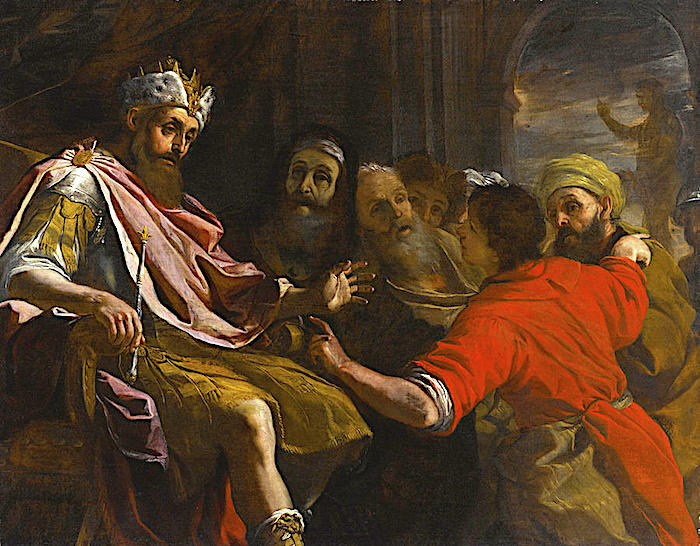







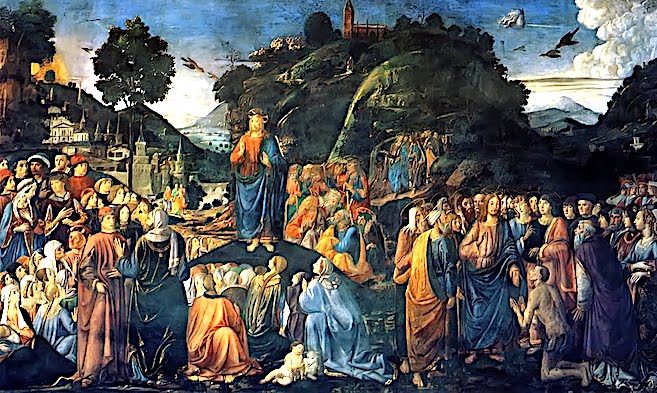


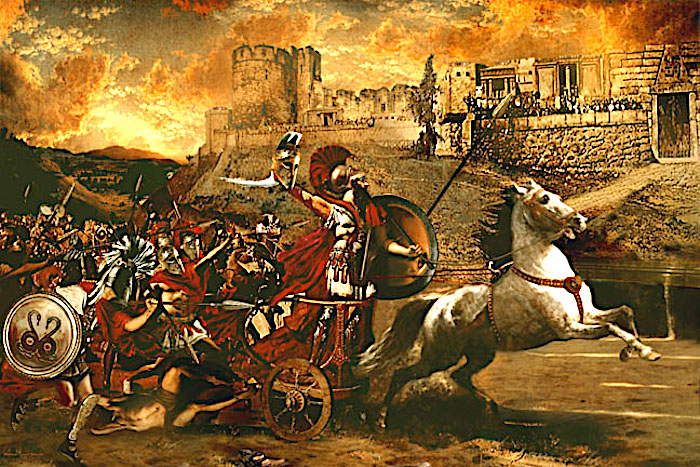
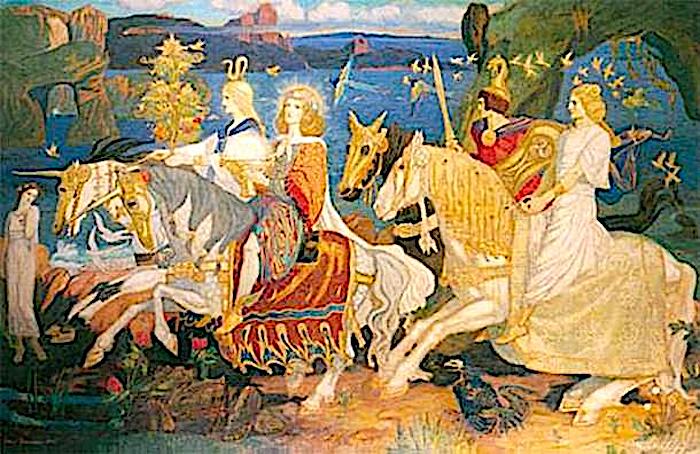


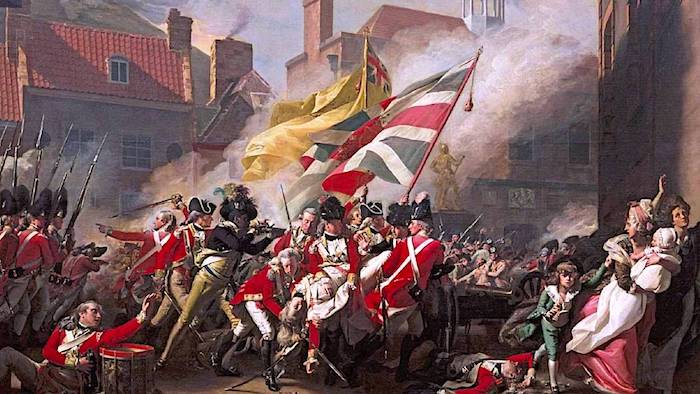






 Posted in
Posted in  Tags:
Tags: 
















